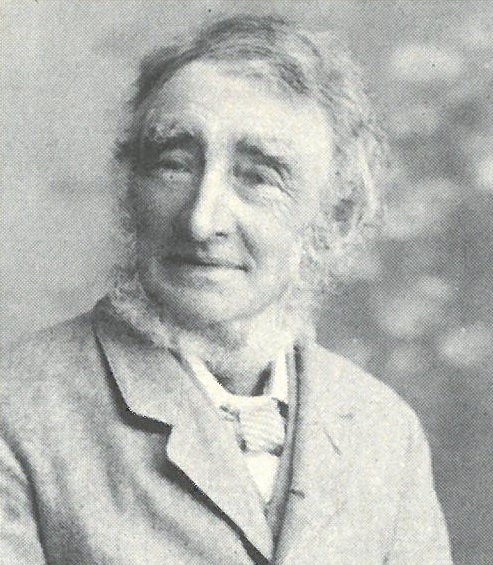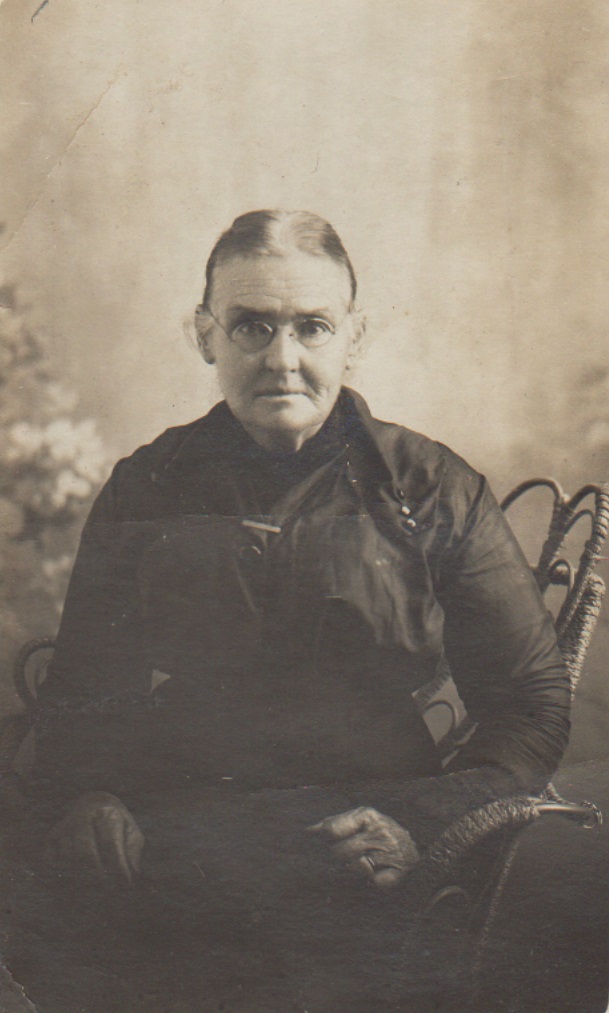Graves, James

James Graves, after whom Graves Street Newton is named, was born in Elloughton with Brough, near Hull, Yorkshire, England, in 1825. He arrived in Adelaide, South Australia, on the sailing ship ‘Stag’ in June 1850, having left Deptford, London, in February of the same year, a voyage of just under four months duration.
However, the voyage proved to be a tragic one for the family. James Graves aged 23 years was travelling with his elder sister Mary Ann Graves aged 25 years, another sister Jane Graves aged 18 years, his younger brother Richard Graves aged 15 years, and their parents, William Graves and Ann Graves (nee Hutching) both aged 52 years. The diary of a fellow passenger, Mr Francis C. Taylor, records the events of the voyage, including the sad death of Ann Graves:
Wednesday 24th April 1850
“I am informed that it is highly probable I shall have to record another death very shortly, a woman lying on the brink of death in the Hospital, she is about fifty-three years of age and her husband about the same age, this made them ineligible for a free passage, but as they have a family of two sons and two daughters they were desirous to accompany them and accordingly paid their own passage and all came on board at Deptford,”
Thursday 25th April 1850
“The poor woman whom I mentioned yesterday is no more, her suffering terminated about half past ten last night, she died perfectly resigned to the will of her maker in whom she had many years faithfully confided and having we believe devoted a great portion of her life to the service of God we sincerely trust that she in the hour of death was in perfect enjoyment of that peace, which the world can neither give nor take away, and our hope is that her immortal soul is gone to that rest prepared for all such as love and fear God. The body was prepared for committal to the waves by being enwrapped in canvass and iron weights enclosed in order that it may immediately sink. It was then brought on deck there to remain until eight o’clock when the Funeral Service was read by Minister and Surgeon and the poor perishable body instantly disappeared. We trust the soul is forever happy.”
According to contemporary newspaper accounts, Ann Graves died of seasickness, which most likely meant severe dehydration. On the passenger list for the ship the notation ‘dead’ pencilled next to her name, but no death certificate issued. Her death officially recorded in the South Australian Government Gazette many years later, in 1866.
Mary Ann Graves married Samuel William Jenkins at Trinity Church, Adelaide, on 12th August 1850, exactly two months after their arrival in the colony. They had three daughters in Adelaide, one of whom died in infancy, before moving to Pennyweight, Victoria, sometime after 1859, where Samuel Jenkins worked as a gold miner. A notice inserted in the newspapers dated 20th January 1862 by Samuel Jenkins of Pennyweight, Victoria, stated that he and his wife, Mary Ann Jenkins, have “parted by mutual consent.” Another daughter born in 1863 at Pennyweight, Victoria. Mary Ann Jenkins (nee Graves) died 10th May 1871, in Victoria.
Jane Graves married William Edward Nairn in 1854 in Perth, Western Australia. They returned to South Australia soon afterwards and had twelve children. Jane Nairn (nee Graves) died 22nd February 1910, aged 79 years and 11 months, at Hamley Bridge, South Australia, buried at the Stockport Cemetery.

In February 1853, William Graves purchased 5-acres of land in Newton from Thomas Shepherd of ‘Marybank’ (Rostrevor / Athelstone), including a private road which later became Graves Street. His profession was ‘farmer’ on the deed, but he very quickly became a ‘market gardener’, whereas in Hull he had been a ‘dockyard worker’. The rate assessment books for the District of Payneham in 1853 records William Graves as the owner of a paling house with 2-rooms on 5-acres of land in the Township of Newton.
James Graves married Mary Birkin from Derbyshire, England, at Trinity Church, Adelaide, in 1851. Their first child, Anna Maria Graves, was born 29th April 1853 at Newton, but died in childhood. A son, James Graves, junior, was born 2nd April 1855 at Campbelltown. The following year, in February 1856, they purchased land in the newly established Village of Newenham (Paradise) on the banks of the River Torrens. At this time, Newenham was fast-growing settlement of newly arrived labourers, drawn to the area by large infrastructure projects, including the MacDonnell Bridge (opened 1857), Thorndon Park Reservoir (opened 1860) and the construction of the new road (Lower North East Road). James Graves was a qualified joiner, whose skills as a carpenter would have been greatly in demand. Their second daughter, Ellen Graves, was born at Newenham in 1857
By contrast, the life of James’ younger brother, Richard Graves, seems to have very quickly spiralled out of control. In August 1850, he was working on a Station at Onkaparinga. However, by 1851, charged with being drunk and disorderly. In 1855, identified as a ‘young footpad’ (a highwayman operating on foot rather than riding a horse) robbing people near Athelstone and Darley (Paradise). Convicted in October 1856, sentenced to six months hard labour at the Dry Creek Stockade (Yatala Labour Prison). The Description Book for the prison listed his occupation as ‘gardener’ and his employer as William Graves of Newton. Soon after his release in 1857, sentenced to a further six months imprisonment, for assaulting his father. In 1858, accused of threatening to burn down his father’s house. In March 1860, Richard Graves charged with vagrancy, he then disappears from the written record. William Graves handed over the management of his land at Graves Street, Newton, to his eldest son, James Graves, in September 1858. He died 10th January 1861 at Newton, aged 64 years. According to the book “Campbelltown 1868 – 1968”, William Graves chose the site for the Campbelltown Primary School (built in 1879) on the corner of Darley and Gorge Roads, Paradise, leaving a lasting legacy in the area. Mary Graves (nee Birkin) died 4th November 1884 at Newton, aged 57 years. Her death notice requests, “Derby papers please copy”, linking her birthplace to Derbyshire, England. James Graves, senior, died 31st January 1894 at Newton, aged 68 years, leaving “three sons, five daughters and twenty two grandchildren to mourn their loss.”
The sons of James Graves, senior, remained in the Campbelltown area carrying on the market gardening tradition established by their parents and their grandfather. The property at Graves Street Newton left to Thomas Graves after paying £150 into the Estate. The small home in which James Graves, senior, and his family lived was demolished in the 1960s.
Researched and compiled by Helen Thiselton, Local History Officer, City of Campbelltown.
(A direct descendant of James Graves of Newton).
If you have any comments or questions regarding the information in this local history article, please contact the Local History officer on 8366 9357 or hthiselton@campbelltown.sa.gov.au
References
Leaney, J. (1968). Campbelltown 1868 – 1968. Campbelltown (S. Aust.): Corporation of the City of Campbelltown, page 139.
Warburton, E. (1986). From the river to the hills: Campbelltown 150 years. Campbelltown (S. Aust.): Corporation of the City of Campbelltown, page 162.
Graves Family (n.d.) Local History Folder (LH BI 00072 GRAVES), City of Campbelltown, Campbelltown (S. Aust.), Local History Room.
Newton (n.d.) Local History Folder (NEWTON – Sections 285, 296 & 297), City of Campbelltown, Campbelltown (S. Aust.), Local History Room.
Stag. (1850). Official assisted passenger lists. State Records of South Australia (Series GRG 35/48/1), (4/1850 – Stag). Retrieved July 11, 2020, from https://www.archives.sa.gov.au/__data/assets/pdf_file/0006/831471/GRG35_48_1_50-4_Stag.pdf
Taylor, F. (1850). Journal of Francis C. Taylor on voyage to Port Adelaide on Stag, 16 February 1850 to 13 June 1850, AJCP (Series JOD/75), (from Papers of Francis C. Taylor). Retrieved July 11, 2020, from https://nla.gov.au/nla.obj-1065135737
SHIPPING INTELLIGENCE. (1850, June 12). South Australian Register (Adelaide, SA : 1839 - 1900), p. 2. Retrieved July 11, 2020, from http://nla.gov.au/nla.news-article38450485
Return of persons who have died on board Emigrant Vessels from 1849 to 5th June 1865. (1866, January 25). South Australian Government Gazette (Adelaide, SA), p. 76. Retrieved July 11, 2020, from http://classic.austlii.edu.au/au/other/sa_gazette/1866/4.pdf
Advertising (1862, January 22). Mount Alexander Mail (Vic. : 1854 - 1917), p. 3. Retrieved July 11, 2020, from http://nla.gov.au/nla.news-article197096351
Family Notices (1910, February 23). The Advertiser (Adelaide, SA : 1889 - 1931), p. 2. Retrieved July 11, 2020, from http://nla.gov.au/nla.news-article5236373
Family Notices (1910, February 23). The Express and Telegraph (Adelaide, SA : 1867 - 1922), p. 1 (4 O'CLOCK EDITION.). Retrieved July 11, 2020, from http://nla.gov.au/nla.news-article209899759
A Young Footpad. (1855, June 15). South Australian Register (Adelaide, SA : 1839 - 1900), p. 2. Retrieved July 11, 2020, from http://nla.gov.au/nla.news-article49310766
Description Book. (1851 – 1860). Convict Department (Dry Creek Labour Prison). State Records of South Australia. (Series GRG 54/3).
LAW AND POLICE COURTS. (1857, August 5). Adelaide Times (SA : 1848 - 1858), p. 3. Retrieved July 11, 2020, from http://nla.gov.au/nla.news-article207123164
Father and Son. (1858, March 6). South Australian Register (Adelaide, SA : 1839 - 1900), p. 3. Retrieved July 11, 2020, from http://nla.gov.au/nla.news-article49774716
Threatening to Commit Arson. (1858, October 9). South Australian Weekly Chronicle (Adelaide, SA : 1858 - 1867), p. 5. Retrieved July 11, 2020, from http://nla.gov.au/nla.news-article88819103
Vagrancy. (1860, March 6). The South Australian Advertiser (Adelaide, SA : 1858 - 1889), p. 3. Retrieved July 11, 2020, from http://nla.gov.au/nla.news-article1202943
Family Notices (1884, November 6). The South Australian Advertiser (Adelaide, SA : 1858 - 1889), p. 4. Retrieved July 14, 2020, from http://nla.gov.au/nla.news-article35970583
Family Notices (1894, February 3). South Australian Chronicle (Adelaide, SA : 1889 - 1895), p. 4. Retrieved July 14, 2020, from http://nla.gov.au/nla.news-article92858073
